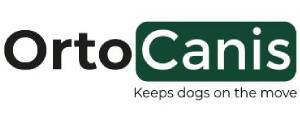Massage is a technique that is as old as humanity itself. It was used in all great historical civilisations.
It spread to the field of veterinary medicine and was first used on horses as a result of economic and social factors.
Rising standards in the field of horse riding and the need to perform on a sporting level coupled with the development of natural therapies caused equine massage to become extremely relevant.
As a result and also due to an improvement in care for pets, massage began to be used more generally for dogs.
Manual therapy, particularly massage, is just as important as a good diet, hydration, training and dietary supplements. It can be used to improve the quality of the life of our pets and helps to solve musculoskeletal problems and resolve injuries. Manual therapy was part of the complementary and alternative medicine boom and grew alongside acupuncture, chiropractic, osteopathy, homeopathy ...
We can separate animals into two main groups in which treatment using manual therapies is widespread and accepted in developed countries: small animals, (mainly dogs and cats) and large animals (horses). Birds or wild mammals from zoos, the circus, etc. may receive occasional treatment. They are classified by vets as exotic animals.
Dogs and horses must be divided into groups depending on whether they have a specific job or not: sporting horses or sporting dogs, guide dogs for the blind, police dogs, rescue dogs... dogs that are only pets, or horses that are ridden for pleasure only.
In Anglo-Saxon countries racing dogs or greyhounds receive a lot of costly care. In Spain it is very much a minority sport and in general the dogs receive very precarious treatment. In developed countries, the presence of a physiotherapist in the medical team is becoming more and more common in veterinary treatment for pet cats and dogs. The physiotherapist looks after pre-operative and post-operative care, and rehabilitation treatment is implemented for accident-related or neurological conditions. Specific programmes are being developed in Great Britain for elderly dogs and horses, and in the USA study protocols and guidelines are being developed for treatment of rheumatic diseases.
Equine Massage
Since ancient times, horses have been taken care of in a very specific manner. There are various examples of types of “physical” or natural treatments that have been applied to animals and that have developed dramatically over the last 20 years. Acupuncture treatment summaries that are more than 3000 years old have been found. Various types of massage were applied in Ancient Rome and in ancient Chinese civilisations. They were also applied more recently by the Hopi Indians in the west of the USA.
In recent decades, this development has been influenced by the care provided to race horses or horses that participate in jumping, dressage, eventing or trials. These horses can earn more than a million euros in prizes. Therefore the owners place a lot of importance on looking after the animal’s health and making sure they recover quickly from injuries.
A lot of people cannot afford to pay expensive bills for surgical procedures, hospitalisation and specific diagnostic tests, e.g. X-rays, scintigraphic ultrasound scans, CAT scans or MRI scans in order to restore their pet or horse’s health. Vets must provide the best service possible and the areas of veterinary sciences that you can specialise in are on the rise. The demand for a more natural, less invasive type of medicine that limits the excessive use of drugs has also descended on the veterinary world.
The development of physiotherapy on one hand and veterinary science on the other hand, the demand for less aggressive techniques from animal owners, the economic factor and the primary manual techniques that were already used on animals have made the development of veterinary physiotherapy possible.
Massage for dogs
More than 65% of manual therapists that work with animals in the USA do so with small animals (dogs and cats). This illustrates the turnaround that has taken place concerning this specialty in recent years.
The number of publications about massage for dogs is also surpassing the amount of existing literature about horses. In recent international conferences about animal rehabilitation, the number of papers and essays on the subject of dogs also surpassed the number on the subject of horses.
We have all witnessed the large amount of physical contact that cats and dogs have with animals of the same species. This contact is intentional, sought after, structured and with a clear goal. Therefore, it greatly resembles what we understand by massage.

